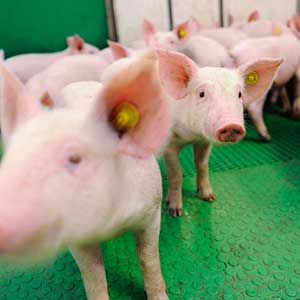The global pork market will remain weak during the first quarter of 2016, followed by some – partly seasonal – improvement leading into the second quarter, according to Rabobank, the Utrecht, Holland-headquartered global financial services company.
Sufficient supply and modest demand development mean the Rabobank five-nation hog price index will bottom out in the coming months, at the lowest point since 2006, after a stronger-than-expected drop at the end of 2015, concludes the Rabobank’s just released Global Pork Quarterly Q1 report.
 “Recent positive demand and price developments in importing countries will start to support prices in exporting countries during Q1,” said Albert Vernooij, an animal protein analyst at Rabobank.
“Recent positive demand and price developments in importing countries will start to support prices in exporting countries during Q1,” said Albert Vernooij, an animal protein analyst at Rabobank.
Regional overviews were summed up as follows:
- China’s market will remain elevated. Imports are expected to further increase, supported by strong domestic prices and further destocking of the herd in 2016, driven by stricter environmental regulations. The level of China’s imports and relative competitiveness of major exporters is a major dynamic in 2016.
- Exports from the United States will determine price levels. In the US, industry expansion is expected to slow after near-record supply growth in 2015, while packers’ margins will remain strong due to limited available capacity. Exports are expected to pick up, supported by low prices, repeal of mandatory country-of-origin labeling (mCOOL) and relisting of plants for export to China.
- Private storage is the key to recovery in the European Union. The EU pork market recovery during the first weeks of 2016 will reverse in the coming weeks, after the suspension of the European Commission’s Private Storage scheme on January 21. Reopening of the scheme will be critical for further market support.
- Brazil’s positive scenario will continue, and the market in that country is forecast to follow the steady path of Q4 2015 due to continuing good domestic and export demand. This will, however, not result in higher prices due to the challenging domestic economy and low international prices.





